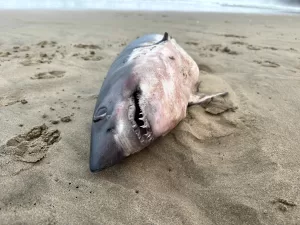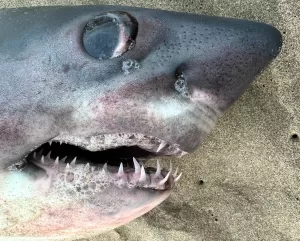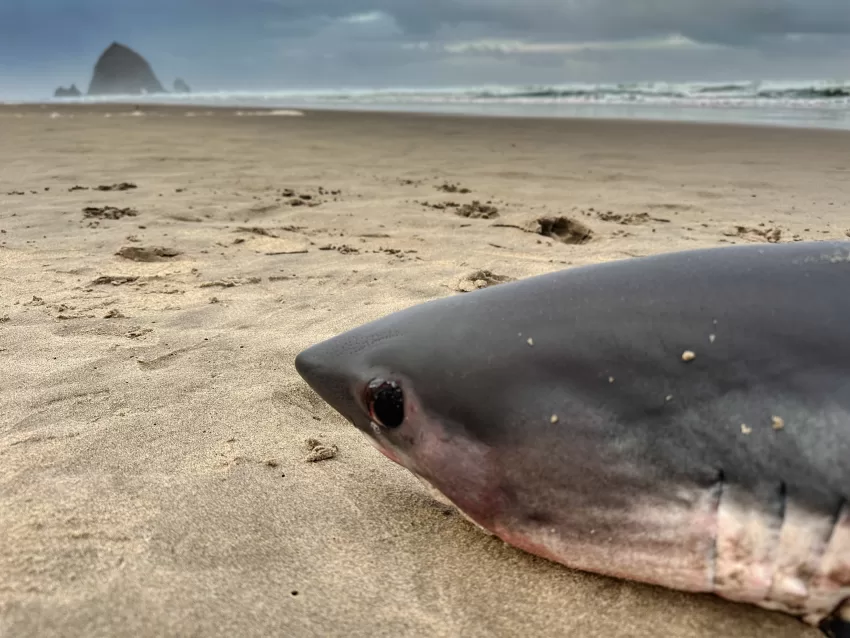Today we recovered a 30-pound salmon shark from Cannon Beach. Though it was not alive, it can still yield valuable information. A necropsy will be performed sometime in the future, hopefully with the assistance of a local school group.
Did you know 17 species of shark reside in Oregon’s coastal waters? From the legendary Great white to the large basking shark and the innocuous spiny dogfish, Oregon’s sharks are part of the complex ocean food web. During summer and fall months, Oregonians may notice juvenile sharks stranded on the beach. Salmon sharks are one of the most common species to wash ashore.
Named for their diet preference of eating salmon, the quick-swimming salmon shark can become stranded throughout the year but are most commonly found during summer months. Salmon sharks give live birth to 2-4 pups off the southern Oregon coast in the spring and the juveniles follow ocean currents and prey. While this species is able to thermoregulate (control their body temperature up to 15 degrees Celsius above surrounding water temperature) and navigate vertically throughout the water column, some juveniles end up outside their ideal temperature range and are unable to thrive.

Boothe, Seaside Aquarium
With an average length of seven feet and weighing in at 300 pounds, mature salmon sharks are quick enough to catch salmon, birds, squid and herring. With grey bodies and white bellies salmon sharks are often mistaken for the great white, but major differences in size, diet, and teeth patterns set the salmon sharks apart. Salmon shark teeth are notably pointed and smooth while white shark teeth are triangular and serrated.

Boothe, Seaside Aquarium
While the salmon shark may look fierce, there has never been a reported incident of a salmon shark attack on a human. If you have a question about a stranded shark or other stranded marine life, be sure to contact local experts at the Seaside Aquarium 503.738.6211.


